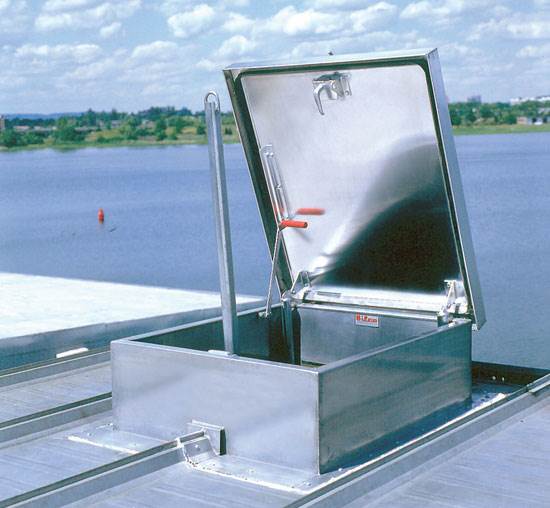Roof access hatches are vital for building upkeep and design. They allow safe roof access for inspections and repairs. Available in different sizes and types, they fit well with various building styles, providing both practical use and visual appeal.
In this article, we’ll explore the different types of roof access hatches and their features to help you choose the right one for your building.
Types of Roof Access Hatches
Standard Roof Hatches
The standard roof access hatch is the most common type in commercial and residential buildings. It features a simple design with a single door that opens upward and offers easy use and straightforward roof access.
Insulated Roof Hatches
Insulated roof hatches help keep the building’s temperature steady while providing convenient entry. They prevent heat from escaping or entering, saving energy.
Smoke Vent Roof Hatches
Smoke vent roof hatches serve two purposes: roof access and smoke ventilation during fires. These solutions automatically open when they detect smoke, letting it escape and clearing the air.
Security Roof Hatches
Security roof hatches offer extra protection. Made from strong materials with multiple locks and tamper-proof designs, they are ideal for buildings with valuable rooftop equipment.
Benefits of Roof Access Hatches
Promote Durability
Roof access hatches need strong, durable materials to endure weather conditions. Common choices include galvanized steel, aluminum, and fiberglass. Galvanized steel fights rust, ideal for harsh weather. Aluminum is light yet robust, and fiberglass resists weather and sun damage well.
Support Ease of Use and Installation
Many hatches feature gas springs that assist in lifting and holding them open effortlessly. Some models are designed for simple installation over the roof opening and are secured from the base flange to the roof. This straightforward use and installation make them perfect for DIY projects.
Provide Weather Protection
Roof hatches are often weather-resistant due to exposure. They need weatherproof seals to keep out water and wind. A well-sealed hatch keeps the interior dry and protected.
Enable Thermal Insulation
For energy savings, insulated roof hatches are important. They help keep indoor temperatures stable by stopping heat loss in winter and heat gain in summer. They use good insulation materials, making them useful for any building focused on energy efficiency.
Enhance Safety
Safety is important for roof access. Many roof hatches include handrails, non-slip surfaces, and safety latches. These features ensure you can use the roof securely.
Feature Customization
Roof access hatches come in different sizes to fit various roof openings. Customizable sizes ensure that the hatch fits the specific needs of the building. This is especially important for buildings with unique roof structures or non-standard openings.
Choosing the Best Roof Access Hatch
When picking a roof access hatch, consider the specific needs of your project. Here are some factors to keep in mind:
Purpose
Determine the main purpose of the roof hatch. Is it for regular maintenance, emergency access, or energy savings? Knowing the main objective will help narrow down the choices.
Usage Frequency
Consider how often the roof will be accessed. This will help you pick the appropriate product. A more convenient option might be required if the roof needs to be accessed often.
Weather Conditions
Consider the local weather. In areas with extreme weather, a strong and weather-resistant hatch is crucial. Insulated hatches help maintain indoor temperatures in various climates.
Budget Considerations
Finally, consider your budget. Advanced hatches with multiple features may offer more benefits, but they also come at a higher cost. Balance the features you need with your budget to find the best option for the area. While staying within budget is essential, prioritize quality to ensure long-term performance. Investing in a premium hatch may save you money on maintenance in the future.
To Sum Up
Roof access hatches play an essential role in design, ensuring safe and easy access to the roof. Understanding the different types available is key to selecting the right one for your needs. By choosing wisely, you can enhance the structure’s design, functionality, and energy efficiency.
